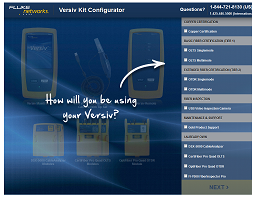Cabling Mistakes #1: Specify Channel Testing While Installing Permanent Links
February 9, 2016 / General, 101 learning, Installation and testing, Upgrading and troubleshooting, Best Practices
While the smart people who install, test and certify network cabling plants know the importance of meeting standards performance parameters and ensuring application support, even the best of us can make mistakes that adversely impact the bottom line and customer satisfaction.
Let’s take a look at the #1 Dumb Thing that smart people do when testing network cabling systems— Specifying channel testing when installing permanent links.
Channel vs. Permanent Link Refresher
In a network, the channel is the connection from one active device to another, including any patch cords and equipment cords. In the data center, this could be from an access switch to a server and would include any patch cords used for cross-connects or interconnects between the two. In the LAN, the channel could be the connection from a distribution switch in a telecommunications room all the way to the network card in a laptop.
The overall length of the channel, including the cabling and any cords should not exceed 100 meters per industry standard guidelines. There are also recommendations on the length of equipment cords--standards recommend 5 meter patch cords.
In contrast, the permanent links is the fixed portion of the channel, typically patch panel to patch panel in the data center or patch panel in the telecommunications room to work area outlet or consolidation point in the LAN. The maximum permitted length of the permanent link is 90 meters.
Not Exactly Intuitive
As the complete end-to-end link over which active equipment on the network communicates, proper data transmission obviously relies on the performance of the channel. It therefore seems intuitive that channel testing would certainly be the way to go, right? Wrong.
Some contractors may prefer channel testing for the simple fact that it's easier to pass, but that's not exactly a good thing. Per TIA standards, combining standards compliant patch cords with a standards compliant permanent link will always result in a passing channel. This design has enabled the plug-and-play application of Ethernet devices. For channel testing, this also means if very high. Quality patch cords are used, the channel can pass even if the permanent link has failed. Why is this a problem?
As the fixed portion of the channel, the permanent links is really considered to be the true foundation of the network. If you test the channel, problems with that foundation may go undetected. Besides, let's face it. Patch cords and equipment move around. And once your patch cords are removed from the channel, you might as well throw you channel testing results right out the window. That's why it's important to specify permanent link testing upfront.
Permanent link testing also offers your customers the benefit of being able to retest the permanent link so that the performance at any time in the future can be directly correlated to the performance at the time of installation. Later down the road if there's a problem with the data transmission in a channel, retesting the permanent link can rule out any problems in the fixed portion. Subsequent channel testing can then be done to limit the problem to the patch cords. And this is a problem more often than you think.
The Weakest Link
While patch cords are an integral part of the network, they often are also considered commodity and quality may be overlooked. They are handled and manipulated more than any other component, which also makes them more subject to damage. Compromising on the quality of patch cords can compromise the performance of the network.
Thankfully, the permanent link adapters that come with the DSX-5000 CableAnalyzer are of the highest quality cable and contain a reference plug to ensure that they do not contribute any disturbance to the permanent link under test and to ensure that the end of the permanent link provides interoperability with compliant patch cords.
With permanent link testing, a passing link can be reliably configured into a passing channel just by adding quality compliant patch cords.





